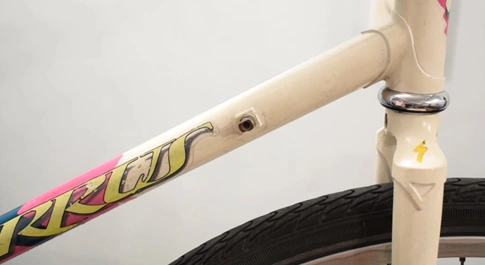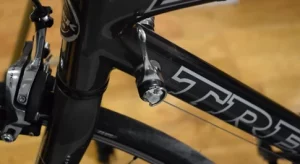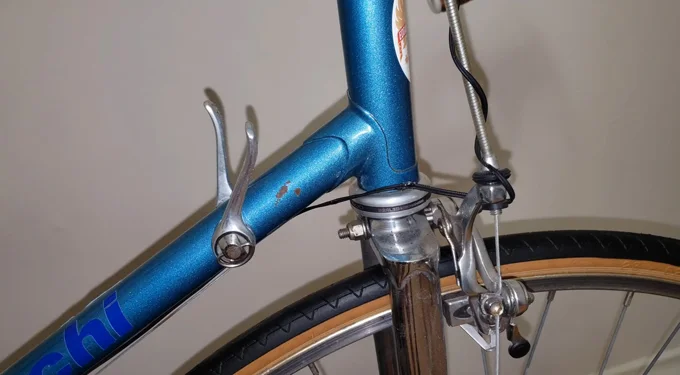Cleaning and lubricating your bike chain can be tough if you don’t have downtube shifters. A dirty chain can cause the gears to wear down prematurely and make it more difficult to shift gears. Using downtube shifters makes it easy to reach the chain for cleaning and lubricating.
You’ll be able to maintain your bike in great condition by regularly cleaning and lubricating the chain using downtube shifters. It’s an easy way to keep your bike running smoothly for years to come. Do not be discouraged when you do not know how to operate a bike’s downtube shifters.
This blog post will discuss how to use downtube shifters, the different types of shifters, and the advantages of using them. We’ll also provide some tips for using these shifters. So, if you’re interested in learning more about downtube shifters, keep reading.
How to Use Downtube Shifters: A Beginner’s Guide

Downtube shifters are essential to many bicycles, but they can also be tricky to use. This guide will teach you downtube shifting basics to take full advantage of your bike’s gears. The following are step-by-step instructions regarding the use of downtube shifters:
Step 1: Locate the Shifters on your Bike
The first step in using downtube shifters is to locate them on your bike. They are typically located on the down tube, near the bottom bracket. If you’re unsure of their exact location, refer to the owner’s manual for your bike.
Once you’ve found the shifters, look at how they are positioned concerning the derailleurs. The shifters should be positioned to reach with your hands while riding quickly. You may need to adjust their position before proceeding if they are not.
Step 2: Identify the Shifting Components
There are typically two levers on each shifter. The inner lever is used to shift to a smaller gear, while the outer lever changes to a larger gear. The levers may sometimes be labeled with “+” and “-” symbols to indicate their respective functions.
In other cases, they may simply be labeled with numbers corresponding to the gears. Once you have identified the levers, take a moment to familiarize yourself with their placement and operation.
Step 3: Adjust Your Bike’s Derailleurs
Before using your downtube shifters, you must adjust the derailleurs on your bike. The derailleur is the component that moves the chain from one gear to another. There is a derailleur for the front gears (the chainrings) and one for the rear gears (the cassette).
Each derailleur has two adjustment screws: one for high gears and one for low gears. These screws control how far the derailleur can move the chain. To adjust the front derailleur, start by pedaling your bike and shifting into one of the middle gears. Then, turn the barrel adjuster screw until the chain is aligned with that gear.
To adjust the rear derailleur, start shifting into a middle gear on the cassette. Then, turn either limit screws to align the chain. Consult your bike’s owner’s manual for more detailed instructions on adjusting your derailleurs.
Step 4: Select a Gear
Once you have adjusted your bike’s derailleurs, you can begin shifting gears on the downtube. The process is similar to shifting gears with handlebar-mounted shifters, but the positioning of the shifters is different.
For shifting into a higher gear, you will push the lever on the right-hand side of the downtube toward the front of the bike. This will cause the chain to move onto a bigger rear cog.
To shift into a lower gear, pull outward on the downtube on the left side toward the front. The chain will then shift to a smaller cog on the rear cassette.
Along with handlebar-mount shifters, be sure to avoid cross-chaining and damaging your drivetrain. When using downtube shifters, keep your chain within a reasonable range of cogs on both the front and rear cassettes. This will help to ensure smooth shifting and prolong the life of your drivetrain.
When riding around in an open area, practice shifting gears until you feel comfortable. Don’t risk losing your balance and crashing into traffic when you’re learning. Allows you to brake before stopping. Give yourself plenty of time and space.
Different Types of Downtube Shifters

Downtube shifters are available in three different types: friction, indexed, and electronic. Each type has its own unique advantages and disadvantages. Here is a detailed look at each type of shifter:
Friction shifters
This is the most basic type of downtube shifter. They rely on friction to move the chain between gears. Friction shifters are easy to use and maintain but can be less precise than mechanical shifters.
Indexed shifters
It’s more complex than friction shifters. They use indexed gears to shift the chain. Indexed shifters are more precise than friction shifters but can be more challenging to operate and maintain.
Electronic shifters
The electronic downtube shifter is the most advanced downtube shifter type. They use electronic sensors to change gears. Electronic shifters are the most precise type but are also expensive and difficult to maintain.
Both types of shifters have their pros and cons, so it’s up to you to decide which one is right for you. If you’re not sure, ask your local bike shop for advice. They will be able to help you choose the best type of shifter based on your specific needs.
Tips for Using Downtube Shifters
Now that you know the basics of downtube shifting, here are a few tips to help you get the most out of the gears on your bike:
Use Both Hands: When shifting gears, it is essential to use both hands. This will give you more control over the shifters and help to prevent accidental shifting.
Don’t Cross-Chain: When shifting gears, avoid crossing the chain (i.e., putting the chain on both the big ring and the big cog, or both the small ring and the small cog). This can lead to the chain coming off the gears, which can be dangerous.
Be Smooth: When shifting gears, try to be smooth. Sudden shifts can put too much stress on a chain and cause it to break.
Practice: The best way to get better at downtube shifting is to practice, so find a safe place to ride and have fun. Try speed shifting while climbing hills and shifting in different gear combinations. The more you practice, the better you’ll get.
Hopefully, this guide has taught you everything you need about downtube shifters. Now it’s time to explore all the different gears your bike has to offer.
Do All Bikes have Downtube Shifters?

No, not every bike has a downtube shifter. While downtube shifters used to be the norm, more and more bicycles are now equipped with other types of shifters. Many mountain bikes, for example, have trigger shifters mounted on the handlebars. This design is well-suited for riding in rough terrain, as it allows the rider to keep a firm grip on the handlebars while shifting gears.
Other prevalent types of shifters include grip shifters and thumb shifters. While downtube shifters are still used on some bikes, they are no longer the standard.
How do I Know When to Shift Gears?
The best time to shift gears on a bicycle is when you feel your pedaling start to become labored. This usually happens when you are pedaling uphill or against the wind. You can pedal more efficiently and maintain momentum by shifting to a lower gear.
Similarly, when you pedal downhill or with the wind at your back, shifting to a higher gear will help you pedal faster and make the most of your natural momentum. In general, it is best to shift gears before you start to feel like you are pedaling too hard, as this can help you avoid strain on your knees and muscles.
Is there a Disadvantage to Downtube Shifters?
One disadvantage of downtube shifters is that they may be more difficult to reach if you have small hands or are riding on rough terrain. Another downside is that they require you to take your hand off the handlebars to shift gears, which is risky if you are riding in traffic. Apart from this, downtube shifters tend to be less durable than other types since they are exposed to road grime.
Do you Pedal while Shifting Gears?
When you’re ready to shift gears, you’ll need to pedal while you’re doing it. The timing can be tricky, but you generally want to start pedaling before you release the old gear and finish pedaling after you engage the new gear.
If you don’t pedal while shifting, there’s a good chance that your chain will come off or that your gears will get damaged. So, even though it takes a little practice, it’s essential to pedal while shifting for your bike to remain in good working order.
Can you Go from 5th to 2nd Gear?
The answer to this question is yes; you can shift from fifth to second gear on a bicycle. Even so, it is important to note that doing so may put extra strain on the chain and gears and cause the bike to slow down faster than if you were in a higher gear.
It is generally recommended that cyclists only shift down one gear at a time when going downhill, as shifting multiple gears at once can also damage the bike. Therefore, while you can technically shift from 5th to 2nd gear when riding a bicycle, it may not be the best idea from a mechanical standpoint.
In Short
Having learned how to use downtube shifters, it’s time to put them to the test. Get out on the open road and give them a try. Also, make sure to adjust the shifters’ tension, so they are not too loose or too tight. If the tension is too loose, the shifters will not work correctly. The shifters will be challenging to use if they are too tight.
With a bit of practice, you’ll be shifting like a pro. Plus, you’ll enjoy the satisfaction of knowing that you’re using one of the most classic cycling components around. So get out there and enjoy the ride; your downtube shifters will help you get where you’re going. Thanks for reading.

